
Juliana was Queen of the Netherlands from 1948 until her abdication in 1980.

Beatrix is a member of the Dutch royal house who reigned as Queen of the Netherlands from 1980 until her abdication in 2013.

Wilhelmina was Queen of the Netherlands from 1890 until her abdication in 1948. She reigned for nearly 58 years, making her the longest-reigning monarch in Dutch history, as well as the longest-reigning female monarch outside the United Kingdom. Her reign saw World War I, the Dutch economic crisis of 1933 and World War II.

Princess Christina of the Netherlands was the youngest of four daughters of Queen Juliana of the Netherlands and Prince Bernhard of Lippe-Biesterfeld. She taught singing in New York and was a long-term supporter of the Youth Music Foundation in the Netherlands. Born visually impaired, she worked to share her knowledge of dance and sound therapy with the blind.
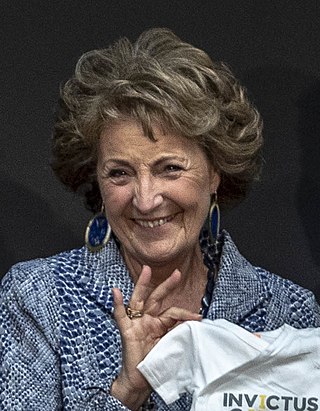
Princess Margriet of the Netherlands is the third daughter of Queen Juliana and Prince Bernhard. As an aunt of the reigning monarch, King Willem-Alexander, she is a member of the Dutch Royal House and currently eighth and last in the line of succession to the throne.

Noordeinde Palace is one of three official palaces of the Dutch royal family. Located in the city center of The Hague in the province of South Holland, it has been used as the official workplace of King Willem-Alexander and Queen Maxima since 2013. The Noordeinde Palace and its surrounding palace grounds are property of the Dutch State.
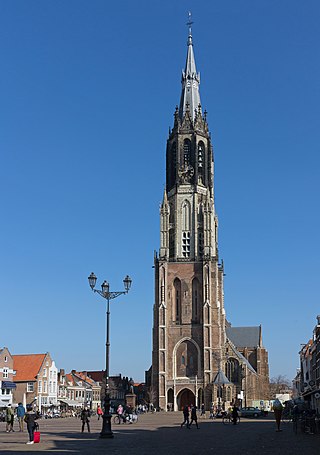
The Nieuwe Kerk is a Protestant church in the city of Delft in the Netherlands. The building is located on Delft Market Square (Markt), opposite to the City Hall. In 1584, William the Silent was entombed here in a mausoleum designed by Hendrick and Pieter de Keyser. Since then, members of the House of Orange-Nassau have been entombed in the royal crypt. The latest members to have been entombed are Queen Juliana and her husband Prince Bernhard in 2004. The private royal family crypt is not open to the public. The church tower, with the most recent recreation of the spire, was designed by Pierre Cuypers and completed in 1872. It is the second highest in the Netherlands, after the Domtoren in Utrecht.

The Golden Coach is a coach owned and used by the Dutch royal family. The Golden Coach was used every year to carry the Dutch monarch from the Noordeinde Palace to the Ridderzaal in order to deliver the Speech from the Throne or the wedding of the Prince of Orange or the Princess of Orange. The Golden Coach is stored at the Royal Stables on the Noordeinde Palace grounds in The Hague.
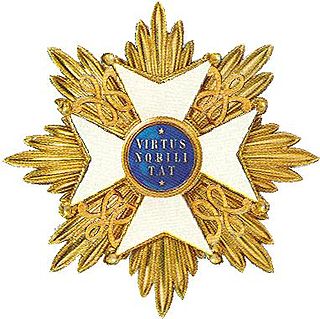
In the Dutch honours system, most orders are the responsibility of ministers of the Netherlands Government. The house orders, however, are awarded at the discretion of the Dutch monarch alone.

Prince Bernhard of Lippe-Biesterfeld was Prince of the Netherlands from 6 September 1948 to 30 April 1980 as the husband of Queen Juliana. They had four daughters together, including Beatrix, who was Queen of the Netherlands from 1980 to 2013.
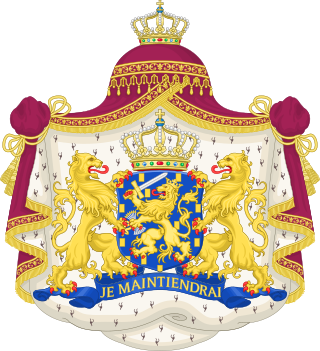
The monarchy of the Netherlands is governed by the country's constitution, roughly a third of which explains the mechanics of succession, accession, and abdication; the roles and duties of the monarch; the formalities of communication between the States General of the Netherlands; and the monarch's role in creating laws. The monarch is the head of state and the de jure head of government of the Netherlands.

Koningsdag or King's Day is a national holiday in the Kingdom of the Netherlands. Celebrated on 27 April, the date marks the birth of King Willem-Alexander. When the Dutch monarch is female, the holiday is known as Koninginnedag or Queen's Day and, under Queen Beatrix until 2013, was celebrated on 30 April. She prolonged the tradition that was born under her mother’s reign: Queen Juliana’s birthday was on April 30th.

Lange Voorhout Palace in The Hague was designed in 1760 by the architect Pieter de Swart for Anthony Patras (1718-1764), a deputy to the States General of the Netherlands.

Princess Sophie Louise of Saxe-Weimar-Eisenach was a princess of the House of Saxe-Weimar-Eisenach. She was born in Weimar, the eldest child and only daughter of William Ernest, Grand Duke of Saxe-Weimar-Eisenach, by his second wife, Princess Feodora of Saxe-Meiningen.

Indonesia and the Netherlands share a special relationship, embedded in their shared history of colonial interactions for centuries. It began during the spice trade as the Netherlands established the Dutch East Indies Company (VOC) trading post in what is now Indonesia, before colonising it as the Dutch East Indies until the mid-20th century. Indonesia was the largest former Dutch colony. In the early 21st century, the Dutch government has committed to boosting its relationship with Indonesia, noting that economic, political, and interpersonal contacts should be further strengthened.
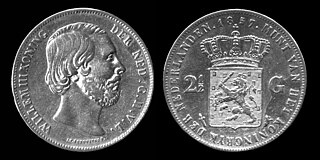
The style of the Dutch sovereign has changed many times since the establishment of the Kingdom of the Netherlands due to formations and dissolutions of personal unions, as well as due to marriages of female sovereigns and cognatic successions.
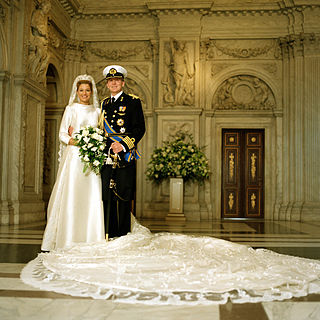
The wedding of Willem-Alexander, Prince of Orange, and Máxima Zorreguieta took place on 2 February 2002 at the Nieuwe Kerk, Amsterdam. Willem-Alexander and Máxima became king and queen on 30 April 2013 after the abdication of his mother, Beatrix.
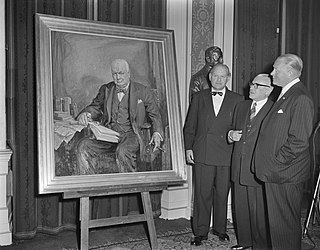
Marten Ykes "Max" Nauta was a Dutch painter, especially noted for his portraits, and stained glass artist.
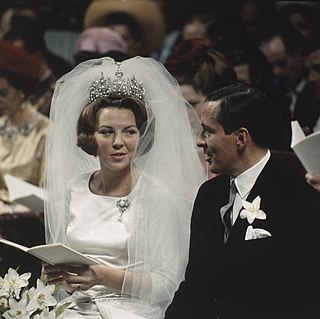
The wedding of Princess Beatrix of the Netherlands and Claus van Amsberg took place on Thursday, 10 March 1966, in Amsterdam, Netherlands. They were married first in a civil ceremony at the Prinsenhof, after which the marriage was religiously blessed in the Westerkerk. The bride was the eldest daughter of Queen Juliana and heir presumptive to the Dutch throne. The groom was an untitled German nobleman. The engagement of the future queen to a German caused an uproar among some Dutch people and the wedding was marred by protests.

The inauguration of Beatrix as Queen of the Netherlands took place on 30 April 1980 at the Nieuwe Kerk in Amsterdam. Beatrix ascended the throne immediately following the abdication of her mother Juliana earlier that day.





















